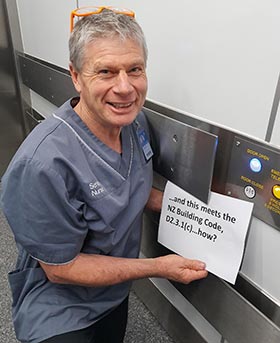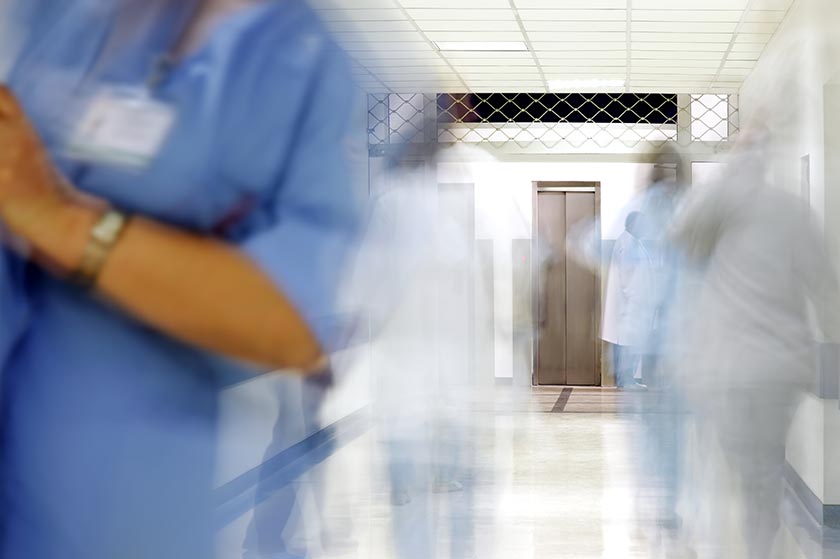
There is a long journey, spanning time and distance, between the tragedy in the Pike River mine, northeast of Greymouth on the West Coast, in 2010, and hospital wards around Aotearoa in 2021.
Both, however, are connected by a single piece of legislation, devised to fix systemic problems behind a disaster that took the lives of 29 workers.
The Health and Safety at Work Act, introduced in 2015 in response to the Pike River mining disaster, is now being used to deal with the safety concerns of health professionals in district health boards (DHBs).
One of those who sees the importance of worker safety as a tool in the fight for better staffing levels, is health and safety representative at Auckland District Health Board, Ben Basevi.
Speaking to Kai Tiaki Nursing New Zealand, Basevi – safe staffing co-ordinator with the DHB – said until now, the act had been under-utilised.
Under the law, the ability to serve what is known as a provisional improvement notice (PIN) was one of the significant powers given to representatives who had completed the necessary unit standard, he said.
The notice includes a description of any possible breach of the health and safety law and could include possible remedies and include a fix-by date.
The DHB was obliged to respond within that timeframe – a minimum of eight days. It could then contact health and safety agency Worksafe to review the notice.
“Worksafe has the option of cancelling the PIN… they can say that it’s not valid. Or they can say ‘yes, we agree with it. It stands’ …or they say ‘we agree with it but we’d like to modify it’.”
Once served, the notice cannot be ignored – if it is, then the representative can call in Worksafe because the employer had breached the notice.
Law offers protection
“It’s a very significant piece of power that’s given to an ordinary person.”
Basevi said that power needed to be treated with care – but it offered good protection for the representative, and also protected the employer.
“If a health and safety rep is going off the track, then Worksafe can come in and actually remove that role from an employee…”
Multiple notices served
Basevi had served four notices on the DHB: the latest on July 6.
He said the notices triggered a series of high-level meetings between the NZNO, the health and safety representative and management.
The ultimate aim of the notices was a zero-tolerance approach by the DHB to the non-supply of staff to attend patients.
Ironically, Basevi said negotiations around life preserving services (LPS) before the last strike had seen both sides agree there should be a zero tolerance for non-supply of patient attenders.
“The one day where we had zero tolerance was the day of the strike.”
It was unacceptable, he said, that at other times this was not the case.
The July 6 notice related to an incident involving a single patient attender (PA).
The notice said four patient attenders (PAs) were requested to monitor four patients in separate but adjoining rooms. The patients were all clinically assessed as needing a PA for their safety.
However only one was provided – and while this patient attender was providing care to a single patient, one of the other three fell and suffered a serious injury.
The notice related not to the patient, but the state of the worker – who had “incurred a degree of mental harm and anguish from being placed in an impossible work situation”.

Meanwhile, PINs were issued in other health board hospitals around Aotearoa in July.
A health and safety representative issued Capital & Coast DHB with a notice for its emergency department. The notice covered multiple issues including staff security concerns, and systemic problems covering the management of 35 after-hours patients with insufficient staff.
A similar notice was issued in Palmerston North Hospital as well, covering the psychological stress on staff dealing with too many patients.
“It’s unrealistic to try and fix the world, but we can have a go… because the non-supply of patient attenders has caused harm to staff,” Basevi said.
The act was not about patient safety – it was about worker safety, he said.
“This is why it’s maybe taken this long to get into the health arena, because it’s quite difficult to see how it fits.”
Changes come after notices
He said as a result of the notices, the DHB was doing work to fix the problem.
Under the law, the board, the CEO and senior officers were legally accountable for any problems. He said the notice had brought management to the table, “pronto”.
“Up to now, the nurses have carried this – they’re the ones who have worked in unsafe situations, where they feel completely unable to say ‘I don’t want to do this, this is unsafe; this is putting my registration at risk’.”
With the DHB starting discussions on improving the situation, Basevi agreed on July 23 to take down the notices.
“We expect that the number of patient attenders that are not supplied will sharply fall – close to that zero line.”
PINs new tactic for safety
Realistically, there would be occasions on any shift when there would not be a patient attender, Basevi said.
“But the expectation is that a patient attender will become available during that shift and be supplied within a time that would not significantly compromise the health of the worker and the cares of the patient.”
Basevi said he was not aware of previous widespread use of PINs in the health sector – but now it was becoming recognised as a useful tool, “and it’s a really good one”.


